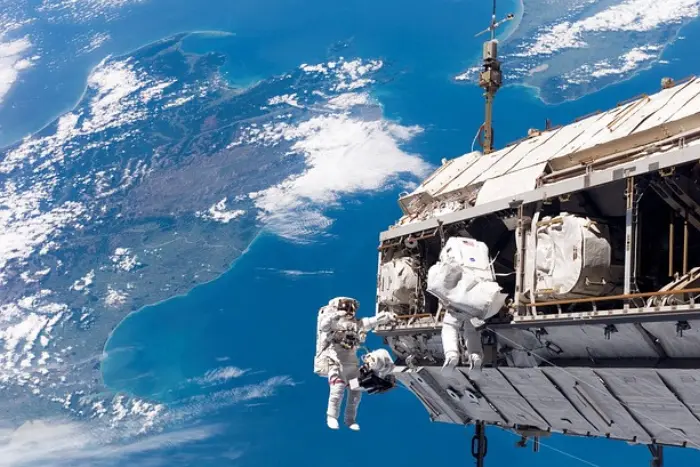The aerospace industry stands as a pivotal force in the saga of space exploration, driving progress far beyond its early aeronautic beginnings. In a symphony of advanced engineering and strategic collaborations, it is not just launching vehicles into the cosmos but forging the very framework of our spacefaring aspirations. The intricacies of how these technological marvels come to life reflect a confluence of innovation and intricate systems management. With every breakthrough, aerospace is extending the boundaries of the possible, inviting humanity to venture deeper into the cosmic expanse. Jump in and explore aerospace’s pivotal role in propelling us toward celestial horizons.
The Evolution of Aerospace in Pioneering Space Missions
Aerospace has relentlessly pursued the cutting edge, transitioning from propeller-driven craft to the roar of rocket engines. The Saturn V, a pinnacle of early innovation, propelled humans to the lunar surface, reshaping space travel’s potential. Each mission, from Voyager’s grand tour to the International Space Station’s enduring orbit, reflects aerospace’s growing sophistication. Modern missions rely on unprecedented precision engineering, enabling rovers to tread Martian soil and telescopes to glimpse distant galaxies. This evolution reflects a blend of visionary science and robust engineering, a testament to aerospace’s transformative impact on space exploration.
Technological Synergy: Advancements in Aerospace Propelling Spacecraft Design
The synergy between aerospace technologies has revolutionized spacecraft design, enabling deeper cosmic penetration. Advanced materials now shield spacecraft against harsh space conditions, enhancing durability and performance. Propulsion systems have become more efficient, with ion thrusters extending mission lifespans and reach. Avionics have leaped forward, integrating AI to navigate and communicate with unprecedented autonomy. This technological harmony has not only accelerated design cycles but has also amplified the potential for discovery in the cosmos.
Integrating Innovation: The Impact of ERP Systems on Aerospace Ventures in Space
The integration of aerospace and defense ERP systems has been transformative for space ventures, streamlining complex operations. These systems orchestrate vast supply chains, ensuring precise component delivery for spacecraft assembly. Data analytics embedded within ERP platforms enhance decision-making, predicting and mitigating risks before they impact missions. The ERP’s project management tools are crucial for adhering to strict launch windows and budget constraints. Moreover, ERP technology facilitates compliance with stringent industry regulations, maintaining the integrity of aerospace ventures in the competitive space race.
Public-Private Partnerships: Catalyzing Progress in the New Space Age
The new space age is markedly defined by thriving public-private partnerships that pool resources, expertise, and visions. Collaborations like NASA with SpaceX have lowered costs and sped up the development cycle of space-bound technology. These alliances have democratized space access, giving rise to a burgeoning commercial spaceflight sector. The fusion of governmental oversight and private sector agility has proved potent, setting the stage for novel exploration opportunities. Significantly, these joint efforts have been instrumental in planning the ambitious Artemis program, aimed at returning humans to the Moon.
Sustainable Space Exploration: The Aerospace Industry’s Environmental Responsibility
The aerospace industry increasingly recognizes its duty to pursue space exploration sustainably. Efforts to minimize orbital debris are gaining traction, with guidelines for responsible satellite end-of-life protocols. Rocket designs are evolving to include reusable components, significantly reducing waste and launch costs. Companies are investing in green propellant alternatives, aiming to lessen the environmental footprint of space travel. Environmental considerations now extend to extraterrestrial surfaces, with missions designed to prevent planetary cross-contamination. Additionally, earth observation satellites contribute to environmental monitoring, playing a pivotal role in combating climate change. Each step towards sustainability reflects a commitment to preserving both Earth’s and space’s natural environments for future generations.
Conclusion
The trajectory of aerospace in space exploration is set for unprecedented heights, spurred by relentless innovation and boundless curiosity. As we harness sophisticated technologies and foster international collaborations, the stars draw ever nearer. The next era of cosmic journeys promises not just new discoveries but a redefined understanding of our place in the universe. With sustainable practices and intelligent systems, aerospace continues to be the bridge between Earth and the great beyond. It is here, within this pioneering spirit, that the future of space exploration takes flight, on the robust wings of aerospace expertise.










